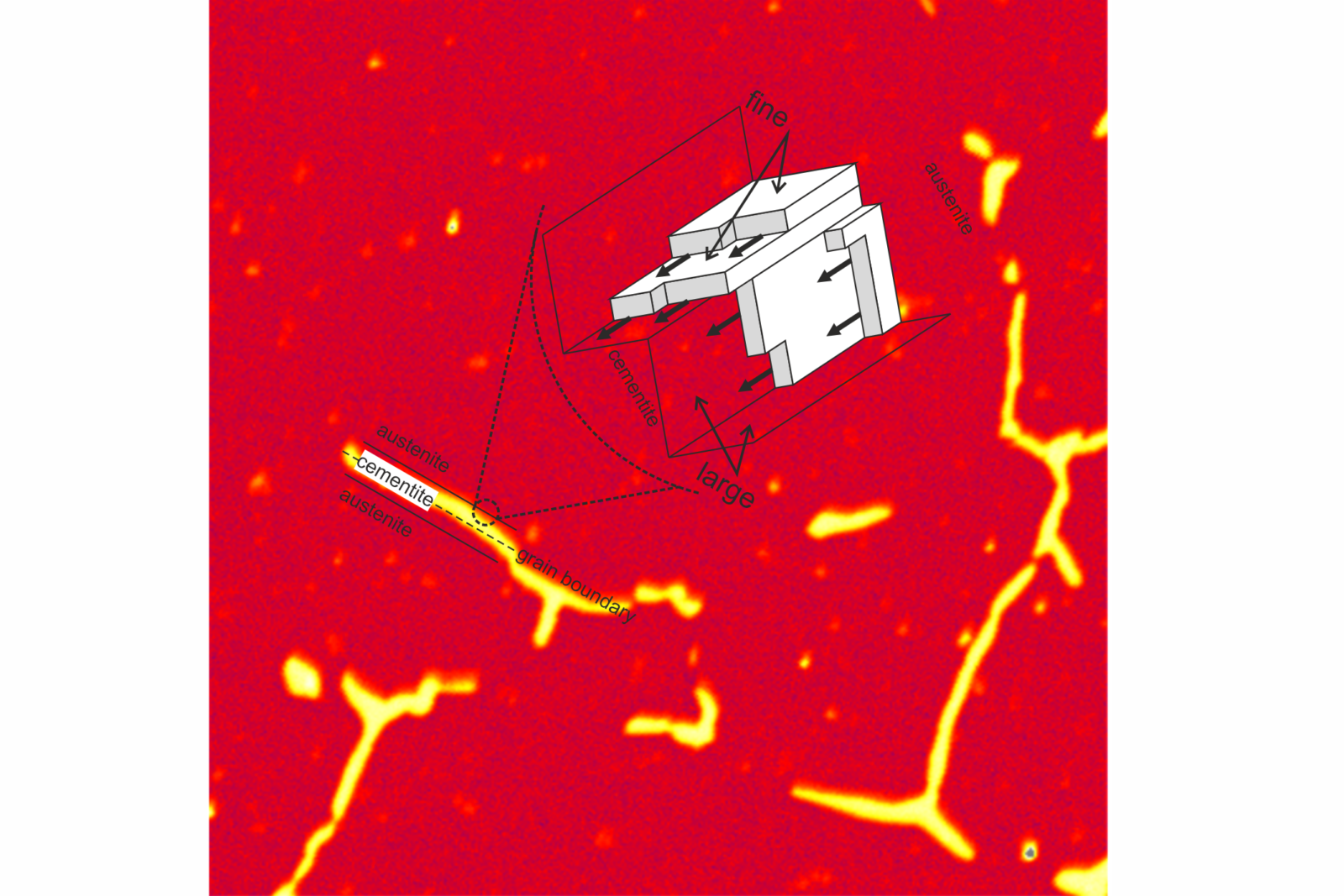The picture shows the carbon mapping by Electron Probe Microanalysis (EPMA) of an isothermally heat treated hypereutectoid steel sample for grain boundary cementite growth. There is a high carbon concentration where grain boundary cementite already formed, and a rather homogeneous carbon distribution in the matrix except for locally higher concentration at potential new cementite nucleation sites. The grain boundary cementite network appears not fully formed.
Overlaid on the carbon map is a schematic representation of the austenite/cementite interface during grain boundary cementite growth according to the ledgewise growth theory. It shows how fine, incoherent and thus mobile cementite ledges form and grow along previously formed ledges. These fine ledges growing in the same direction form together large partially coherent facets, resulting in a stepped austenite/cementite interface.
We compare different modeling of diffusive versus interface control on the growth of proeutectoid cementite at austenite grain boundaries. We use evidence for a „ledge-wise“ growth mechanism leading to a stepped morphology of the austenite / cementite interface in our modeling, as schematised in the picture. The anisotropic mobility of the austenite/cementite phase boundary leads to an interface made of steps (or ledges) forming and growing one upon the other.
We investigate the influence of such structured interface on the grain boundary cementite growth kinetics due to, e.g., elastic interactions between ledges because of differences in phase molar volumes. We compare the results of this interface control with simulations of cementite precipitation with a disordered interface, based on classical nucleation theory and a model for precipitate growth accounting for constraints of a heterogeneous nucleation site energy, and a finite interface thickness in the nm-range.
